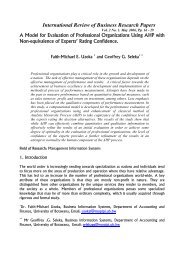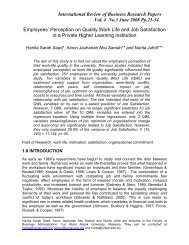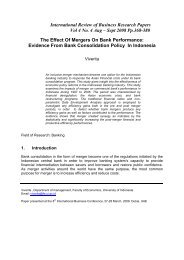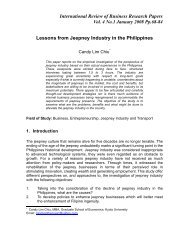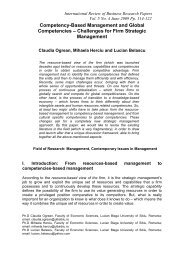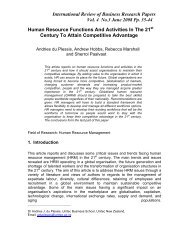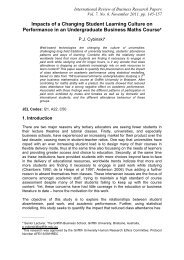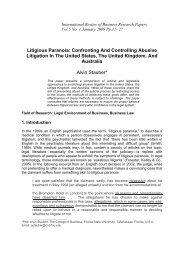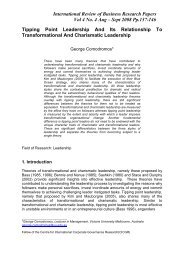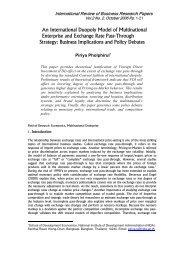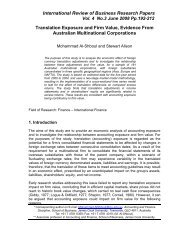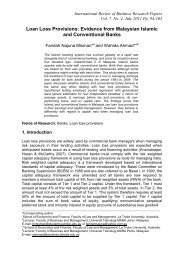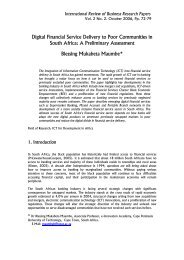Dimension of Halal Purchase Intention - International Review of
Dimension of Halal Purchase Intention - International Review of
Dimension of Halal Purchase Intention - International Review of
You also want an ePaper? Increase the reach of your titles
YUMPU automatically turns print PDFs into web optimized ePapers that Google loves.
Shaari & ArifinSourcesMeasurementMarketing Regenstein, Chaudry, 6-Likert ScaleConcept& Regenstein (2003)Soderlund (2006)Awareness Froehle (1994) 6-Likert Scale<strong>Halal</strong> Certificate Hayati et al. (2008) 6-Likert ScaleRegiousity Weaver & Agle (2002);Worthington et al.(2003)6-Likert Scale3.0 MethodologyThis study employed survey research method from a random sample <strong>of</strong> 200respondents around Kota Samarahan, randomly based on non probability basicsampling where the respondents do not know they will be selected as a samplesubject (Malhotra, 2004). Research surveys were used to quantitatively gaugethe level <strong>of</strong> understanding <strong>of</strong> general <strong>Halal</strong> concept that contributes to Muslimconsumers purchasing decision. The questions were prepared using six pointLikert scale questionnaires. The six anchors that were used in thequestionnaires were (1) strongly disagree, (2) disagree, (3) fairly disagree, (4)fairly agree, (5) agree, (6)strongly agree. Data was then analyzed using SPSSwith frequency and mean analysis used to explain the demographic and level <strong>of</strong>agreeable <strong>of</strong> respondents towards the purchase intention statements. Factoranalysis was later employed to identify the dimension for <strong>Halal</strong> purchaseintention.4.0 Results & DiscussionFrom the 200 questionnaires being distributed, 135 questionnaires weresuccessfully collected, giving a 67.5% response rate. Sekaran (2000) agreeswith Roscoe (1975) that for most studies, a sample size between 30 and 500would be sufficient.Analysis on the respondents‟ demographic pr<strong>of</strong>iles as in Table 1 below revealsthat majority <strong>of</strong> the respondents were female, 78 (57.8%), while for age category,the number <strong>of</strong> respondents with age between 20-29 years old, 86 (63.7%) wasthe highest. Most <strong>of</strong> the respondents were single, 70 (51.9%) respondents.Malay constituted highest respondents‟ race with 116 (85.9%) respondents,while the rest, includes Bidayuh, Melanau, and Iban were 19 (14.1%). In terms<strong>of</strong> level <strong>of</strong> education, 67 respondents (49.6%) stated having SPM and below.Most <strong>of</strong> the respondents‟ works in government sector, 51 (37.8%); 28 (20.7%)work in private sector, and 33 participants were students.73 <strong>of</strong> the respondents (54.1%) have annual income below RM 15000; 20(14.8%) between RM 15001 to RM 30000; 8 (5.9%) between RM 30001 to RM45000, 2 (1.5%) between RM 45001-RM 60000, and RM 60001 and above,while 30 (22.2%) respondents cited having no annual income.447



